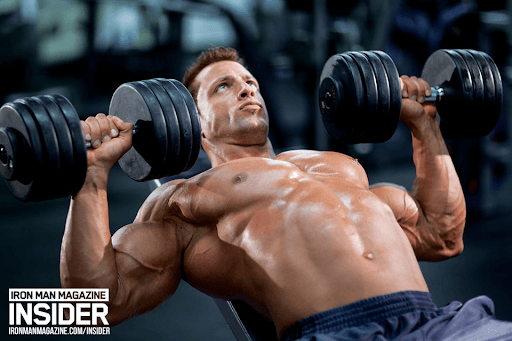

A well-defined chest is not just a symbol of strength but an embodiment of confidence and vitality. It’s the centerpiece of a sculpted physique that draws attention and admiration from both men and women wherever you go.
Not only does a sculpted chest commands attention and exude confidence. It also provides multiple benefits, from improved posture and upper body strength to increased athletic performance and functional fitness.
However, building a powerful pectoralis takes more than wishful thinking or half-hearted efforts at the gym. It requires dedication, discipline, and a strategic approach to training.
In this article, we delve into the secrets of chiseled pectorals, revealing the essential exercises and nutritional strategies that will help you forge a chest that commands respect and leaves a lasting impression.
Benefits of Having Strong Pecs
Building muscular pecs offers multiple benefits, including:
Functional Performance and Injury Prevention
Well-developed pectoral muscles are crucial in various pushing movements, such as bench pressing and push-ups. They contribute to overall upper body strength, enhancing your ability to push, pull, and lift, which is essential for daily tasks and athletic performance.
A well-trained chest also provides stability and support to the shoulder joint, reducing the risk of shoulder impingements, rotator cuff injuries, and other upper-body ailments.
Enhanced Aesthetic Appeal
Having a well-defined chest enhances your physical appearance. They add depth and create a visually appealing V-shaped upper body that contributes to a balanced physique. This helps instantly grab attention, earn your respect, and boost your confidence, leaving a lasting impression on others.
Improved Posture and Stability
When your pecs are weak or underdeveloped, it can lead to rounded shoulders and a hunched posture. Strong pectoralis muscle contributes to good posture by helping stabilize the shoulder joint, keeping it aligned, and preventing it from rolling forward.
A muscular chest is also essential for women. It adds height to chest walls, helping with a lift if you have a droopy chest.
However, do not train only your pecs at the expense of other important muscles. You must also strengthen your upper body muscles, including the upper back, shoulders, and lower back muscles, for a good posture. Otherwise, you will slouch forward.
Enhanced Upper Body Strength
Strong pectoral muscles provide a solid foundation for strength and power. The strength allows you to excel in exercises that need pushing and lifting, like bench presses, push-ups, and overhead presses, enabling you to lift heavier weights and perform better in sports and daily activities.
How to Build a Well-defined Chest
Building a well-defined chest requires a comprehensive approach encompassing nutrition, specific workouts, and rest and recovery period. You need to consider the following when building a well-defined chest.
Food for a Well-defined Chest
Maintaining a balanced and nutrient-rich diet is crucial to fuel muscle growth and achieve a well-defined chest. Like any other body part, consume enough lean protein sources such as chicken, turkey, fish, tofu, and Greek yogurt, as protein is essential for muscle repair and growth.
Also include complex carbohydrates like whole grains, fruits, and vegetables for sustained energy during workouts and healthy fats from avocados, nuts, and olive oil to support hormone production and aid muscle recovery. Above all, stay hydrated by drinking enough water.
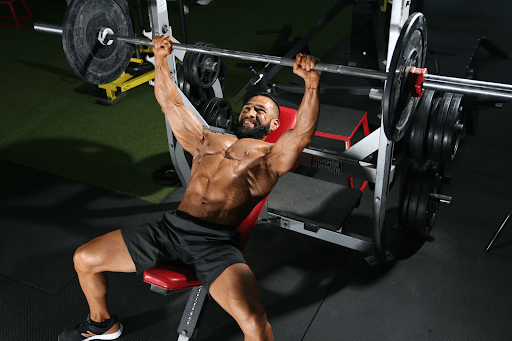
Exercises for Building a Well-defined Chest (Pecs)
You need to do effective workouts to have strong pecs. These exercises should include those that can be done at the gym and at home. They include:
Bench Press
The bench press is an excellent workout for building a massive chest. It’s an exercise that has been in place for a while and used by many bodybuilders and weightlifters, including Arnold Schwarzenegger and Ronnie Coleman.
To do the workout, place a barbell on the rack, lie flat on a bench with your feet firmly planted on the ground and your eyes fixed on the barbell. Grip the barbell slightly wider than shoulder-width apart with an overhand grip, and lower it from the rack to your chest, keeping your arms fully extended.
Press the barbell back to the starting position, fully extending your arms. Focus on squeezing your chest muscles throughout the movement. Perform 10 sets of 6 reps with 60-sec rest.
Dumbbell Fly
It is an exercise that strengthens your pecs and shoulder muscles. You can exercise while standing or lying on your back, but the most commonly known is lying on the bench.
Lie on a flat bench with a dumbbell in each hand, palms facing downwards. Raise the dumbbell by extending your arms entirely above your chest.
Slightly bent arms and lower the dumbbells out to the sides in a wide arc, feeling a stretch in your chest. Bring the dumbbells back to the starting position, squeezing your chest muscles. Do 3 sets of 12 reps with 60-sec rest.
Weighted Chest Dips
Weighted dips are an advanced variation of traditional chest dips. They are effective exercises for the pecs and the upper body, including the shoulder, triceps, and arms. For this workout, you need a dip station or parallel bar and added weight—a dip belt, weighted vest, dumbbells, or heavy backpack.
Wrap a dip belt around your waist with a chain facing the front. Drop the chain end with the hook through the belt loop to allow the belt to tighten and attach the weight plate.
Grip the bars with your palms facing inward and your arms fully extended. Your elbow and arms should be straight and locked.
Slowly lower your body by bending your elbows at a right angle until your upper arms parallel the ground. Your elbow should be flared out to the sides. Then push yourself back up to the starting position. Focus on keeping your chest up and engaging your muscles throughout the movement. Perform 3 sets of 10 reps with several minutes of rest.
Incline Dumbbell Chest Press
The incline dumbbell chest press is a variation of the inclined chest press, effective at building chest muscles and indirectly involving shoulders and triceps. It targets the pectoral muscles effectively and promotes equal strength on all sides of the chest.
To perform an inclined dumbbell chest press workout, set an adjustable bench to an incline of 45 degrees. Lie on the bench holding a dumbbell in each hand.
Extend your arms to lift the dumbbells at shoulder level with your palms facing up. With your arms locked, lower the dumbbells to the sides of your chest, and then press them back up to the starting position, squeezing your chest muscles at the top. Do 4 sets of 2 reps with 60-sec rest.
Incline Press-Up
The incline press-up is a variation of the traditional press-up that primarily targets the upper chest muscles.
To do the workout, first, set up an elevated surface such as a bench, step, or sturdy platform.
Place your hands slightly wider than shoulder-width apart on the high surface, with your fingers pointing forward. Step your feet back and firmly plant them on the floor to extend your body into a straight line, creating a diagonal angle from your head to your heels.
Bend your arms and lower your chest until it touches the elevated surface, keeping your elbows at a 45-degree angle to your body.
Push through your hands and extend your arms, returning to the starting position. Perform one set of 60 reps with 60-sec rest.
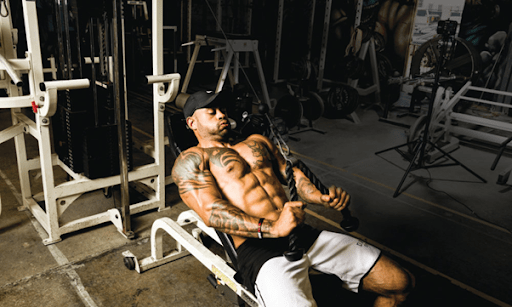
Cable Crossover
Cable crossovers target the inner chest and provide constant tension. Set the cables at shoulder height and stand in the middle of the cable machine with one foot slightly in front of the other.
Grasp the handles, keeping your elbows slightly bent and hands outstretched. Brace your core and pull the cables together before your body, crossing them over. Slowly return to the starting position while maintaining tension in your chest muscles.
Decline Push Up
It is a variation of the traditional push-up, where you increase the challenge of the workout by placing your feet on an elevated surface. It strengthens the upper body, including the chest, shoulder and core.
To do the exercise, first, find a chair or a bench an inch or higher to place on your feet. Position yourself in a push-up position with your feet on a bench or chair. Ensure your body is in a straight line from head to toe with no itching and sagging.
Lower your body by bending your elbow until your chest nearly touches the ground. Push yourself back to the starting position, engaging your chest muscles throughout the movement.
Clap Press-Up
A clap press-up is a variation of a conventional press-up. It mixes upper body explosiveness with complicated techniques to create an intense and powerful exercise suitable for athletes and lifters alike.
To perform a clap press-up workout, start in a plank position with your hands slightly wider than shoulder-width apart and your back straight. Lower your body by bending your elbows until your chest is a few inches from the ground, and explosively push yourself off the ground, clapping your hands before moving back to starting positions.
Reverse Grip Bench Press
The reverse grip bench press is an advanced barbell bench press variation that emphasizes the lower and inner portions of the chest muscles and triceps. In this exercise, the grip on the barbell is reversed, with the palms facing toward the lifter’s face instead of away from it.
To perform the workout, set up a flat bench and position yourself as you would for a regular bench press. Lie flat on the bench with your feet firmly planted on the ground and your back, shoulders, and head in contact with the bench.
Position your hands on the barbell with an underhand grip (palms facing towards you) slightly wider than shoulder-width apart. Your thumbs should be wrapped around the bar for stability.
Lift the barbell off the rack, fully extending your arms, and hold it directly over your chest with your elbows slightly bent. This is the starting position.
Lower the barbell slowly and under control towards your lower chest, keeping your elbows tucked in and close to your sides. Focus on maintaining proper form and control throughout the movement.
Once the barbell reaches your chest, pause briefly, and then press it back up to the starting position by extending your arms and squeezing your chest muscles. Repeat the movement for the desired number of repetitions.
Rest and Recovery
Adequate rest and recovery are crucial for muscle growth and preventing overtraining. Allow your chest muscles sufficient time to recover between workouts.
During rest days, prioritize quality sleep for the body to repair and rebuild muscles. Incorporate active recovery strategies such as light cardio or stretching to promote blood flow and reduce muscle soreness.
Conclusion
A well-defined chest enhances your physical appearance and signifies strength. To transform your physique and boost your confidence, dedicate time and effort to working out. Some workouts that can create balance and definition of the chest muscles are compound exercises like bench presses and isolation exercises like dumbbell flyes.
However, building a strong chest goes beyond training alone. Proper nutrition, rest, and recovery support muscle growth and prevent injury.
So, whether you aspire to impress at the beach or enhance your athletic performance, develop powerful pecs with these workouts.







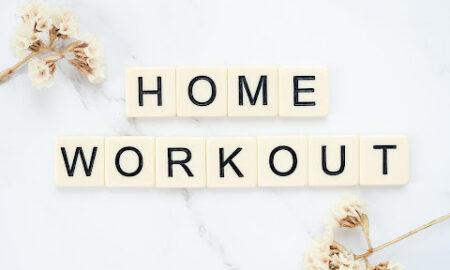










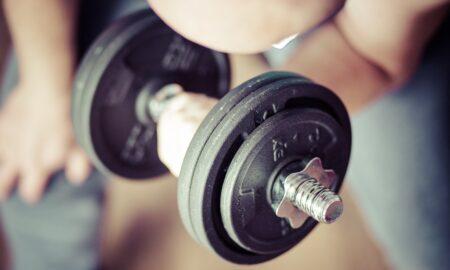

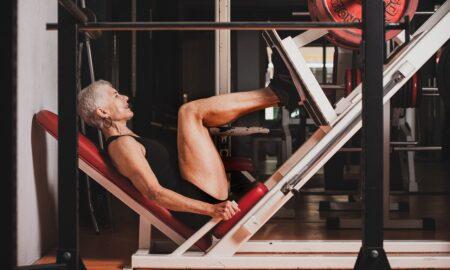

You must be logged in to post a comment Login